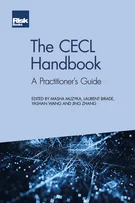ALM within a Constrained Balance Sheet
Andreas Bohn and Paolo Tonucci
Introduction
New Regulatory Developments for Interest Rate Risk in the Banking Book
Bank Capital and Liquidity
ALM within a Constrained Balance Sheet
Measuring and Managing Interest Rate and Basis Risk
The Modelling of Non-Maturity Deposits
Modelling Non-Maturing Deposits with Stochastic Interest Rates and Credit Spreads
Managing Interest Rate Risk for Non-Maturity Deposits
Optimising Risk and Return of Non-Maturing Products by Dynamic Replication
Hedge Accounting
Bank Runs and Liquidity Management Tools
Strategies for the Management of Reserve Assets
Optimal Funding Tenors
Instruments for Secured Funding
Funds Transfer Pricing in the New Normal
Capital Instruments under Basel III
Understanding the Price of New Lending to Households
Asset and liability management (ALM) can be defined as the measurement of the structural and banking book risks on the balance sheet, the forecasting of those risks under different market assumptions and the actions taken to manage those risks. This should include the following risk types:
-
maturity transformation, which creates both refinancing risk and interest rate risk;
-
behavioural risk, which is measured as the potential deviations in customer behaviour from modelled assumptions and generates both refinancing and interest rate risk;
-
structural risk, which reflects the interest rate exposure generated from longer term structural exposures on the balance sheet;
-
basis risks arising from products fixing against different interest rate benchmarks such as base rates, overnight index rates or term interbank offered rates.
ALM strategies represent the ways in which the risk is managed once the form of measurement has been determined. The increase in the sophistication and extent of liquidity risk management, as well as the impact of other regulatory driven change, has resulted in these risks having to be managed with an understanding and appreciation of the
Copyright Infopro Digital Limited. All rights reserved.
You may share this content using our article tools. Printing this content is for the sole use of the Authorised User (named subscriber), as outlined in our terms and conditions - https://www.infopro-digital.com/terms-and-conditions/subscriptions/
If you would like to purchase additional rights please email info@risk.net
Copyright Infopro Digital Limited. All rights reserved.
You may share this content using our article tools. Copying this content is for the sole use of the Authorised User (named subscriber), as outlined in our terms and conditions - https://www.infopro-digital.com/terms-and-conditions/subscriptions/
If you would like to purchase additional rights please email info@risk.net





